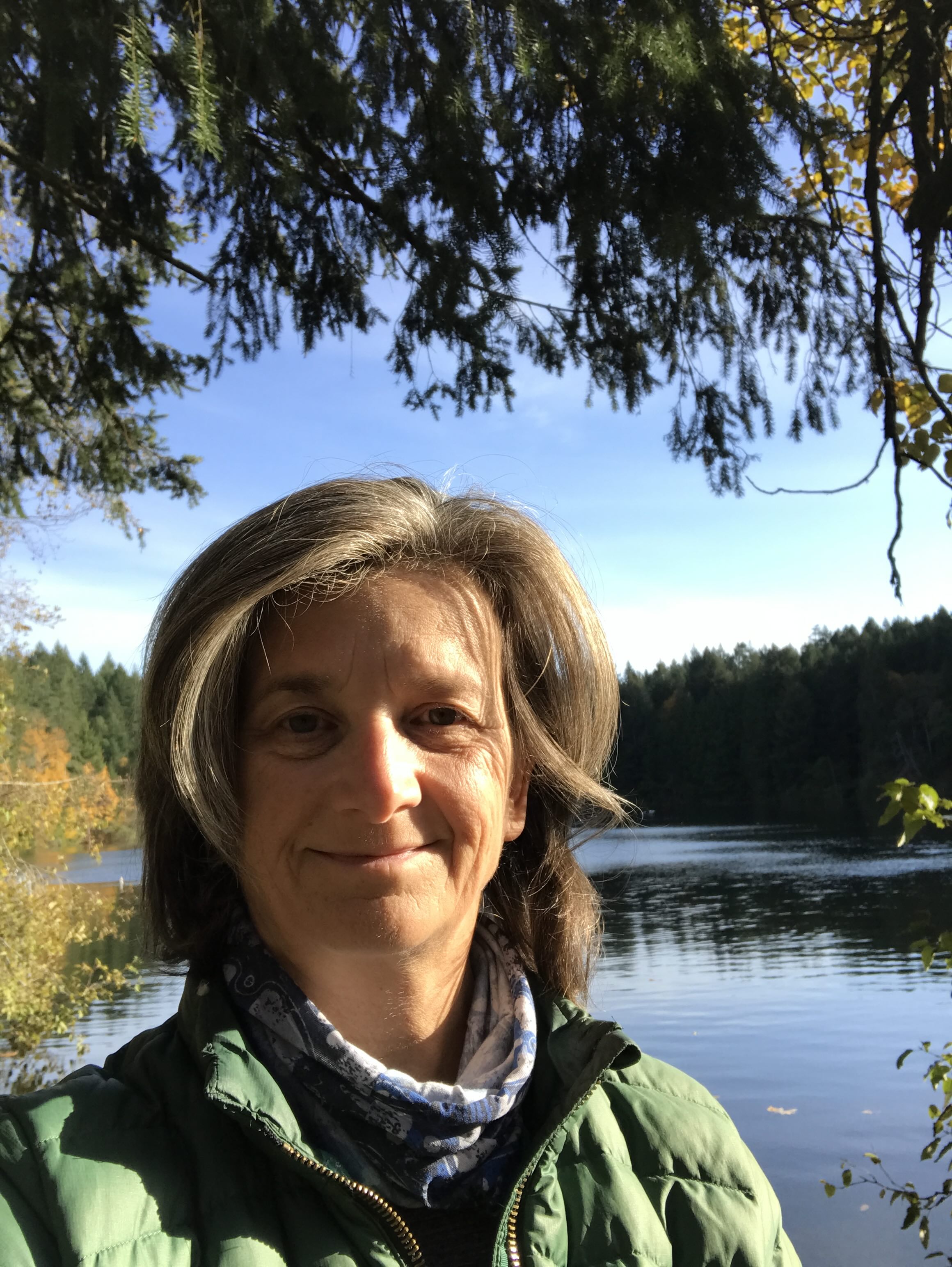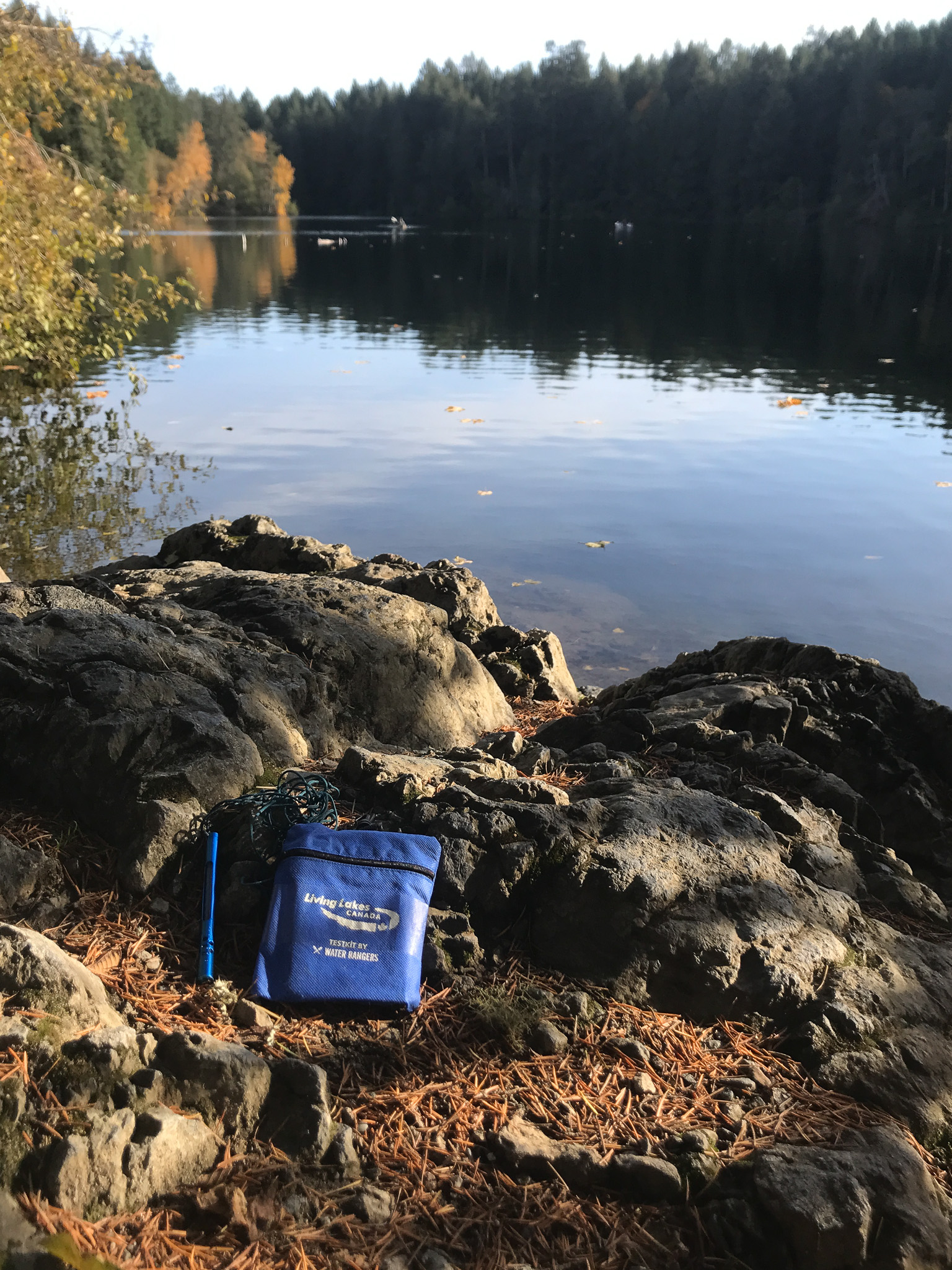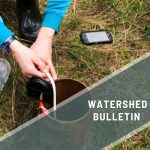Lynn Heap monitors Durrance Lake in B.C.
The Lake Blitz Volunteer Spotlight series gives us the opportunity to show appreciation for our remarkable Lake Blitz volunteers. From B.C. to Nova Scotia, hundreds of volunteers have helped to create a snapshot of lake health by collecting temperature readings and taking photos of the lake they’ve decided to monitor to better understand climate impacts.
We are excited to present our latest volunteer to be featured in this series: Lynn Heap, who is joining in on the Lake Blitz from B.C.!
 Q – What is your background?
Q – What is your background?
A – I studied linguistics in the ‘90s when the goal was to capture Indigenous languages from the last remaining speakers. Now, language revitalization is bringing life to SENĆOŦEN, which is spoken by the people who have been where I live since time immemorial. My career had me in an office but I’ve always loved being in the woods hiking or trail running. About 10 years ago I discovered mountain biking and the South Island Mountain Bike Society that maintains trails and teaches trail building and stewardship. I recently started helping to monitor water quality in the local streams and volunteer on projects to restore habitats with the Peninsula Stream Society.
Q – What lake(s) are you monitoring (include province)?
A – I monitor Durrance Lake, British Columbia.
Q – Do you have a personal connection to your lakes?
A – I’ve been coming to this lake since 1989 with my family, dogs, and now, my friend and I swim or dip in it all year. I have many memories of this area and I appreciate its natural values.
Q – What motivated you to volunteer with the National Lake Blitz?
A – I come to the lake often and was thrilled to learn of the opportunity to contribute as a citizen scientist to open data that may one day be useful.
I’m also genuinely curious about the lake temperature – I’m eager to test PH in the lake next year.
 Q – What concerns do you have about the future health of your chosen lake?
Q – What concerns do you have about the future health of your chosen lake?
A – This lake is clearly loved by locals, however, on very hot days in the summer it can be inundated with people who aren’t aware of their impact. The lake is in a regional park that is well managed and connects with a provincial park that is actively implementing a management plan for a variety of park users. At the moment, I’m optimistic about the future health of the lake and park.
Q – What is your favourite bird, fish or other wildlife species you see at your lake?
A – A few years ago, a fishing dock was installed at the lake, which is stocked with trout, so there is usually an eagle around. An otter pops up every so often, and there are usually violet-green swallows and kingfishers.
Q – What is one thing everyone can do to protect their local lakes?
A – Learn how to be a steward at any level:
– Pickup up garbage
– Pluck a young invasive plant before it gets too big
– Be curious about the natural values of the area
– Share what you love about the area





